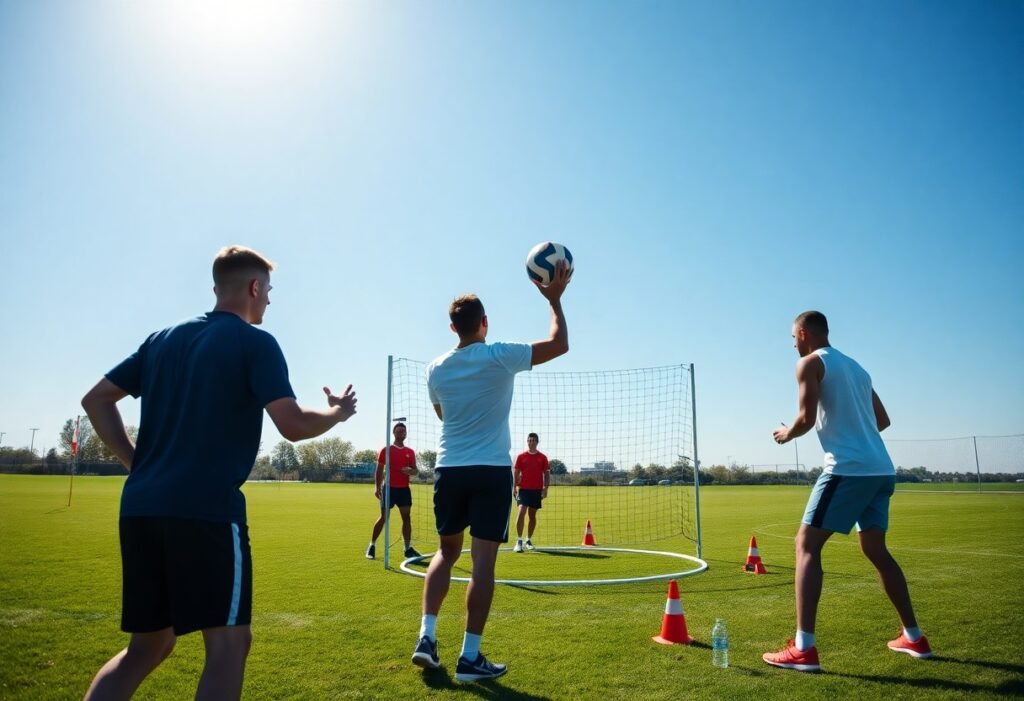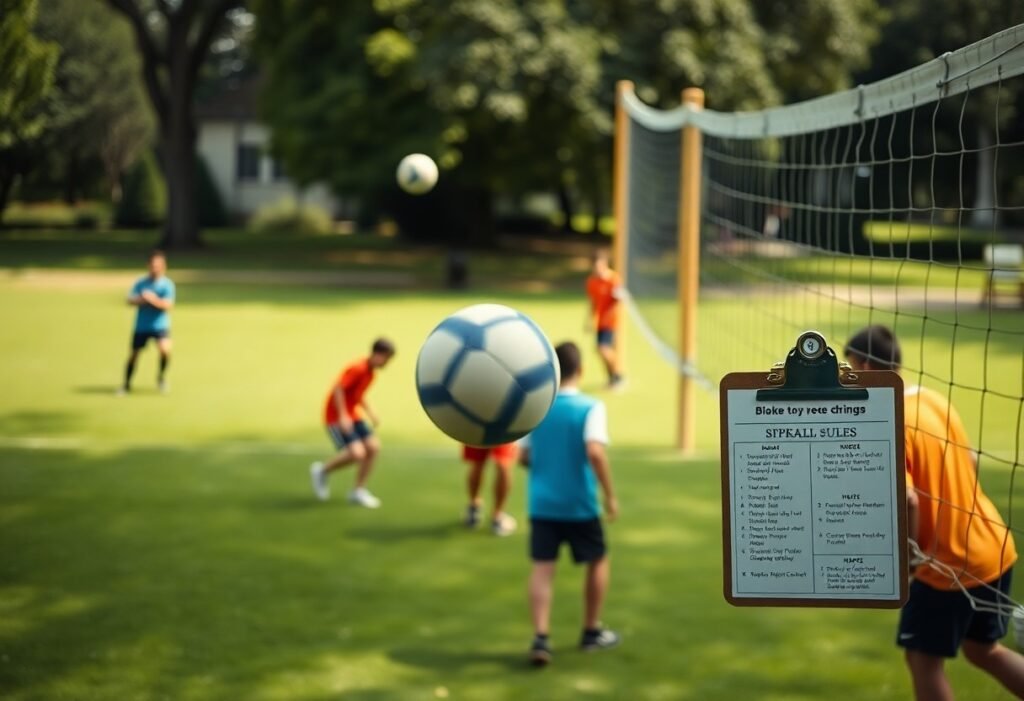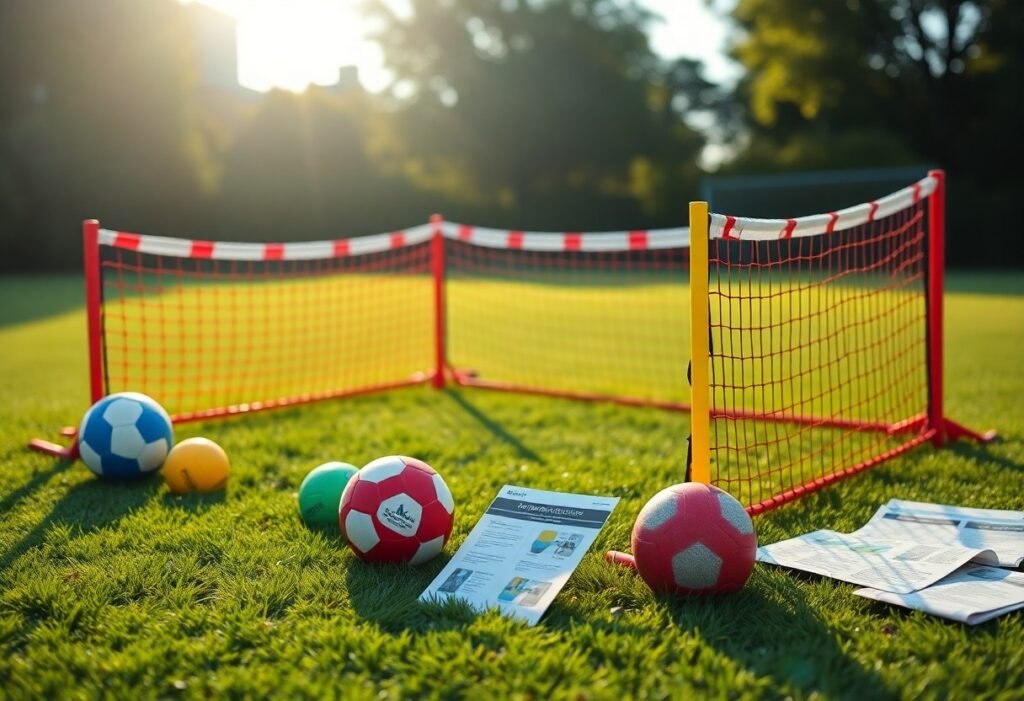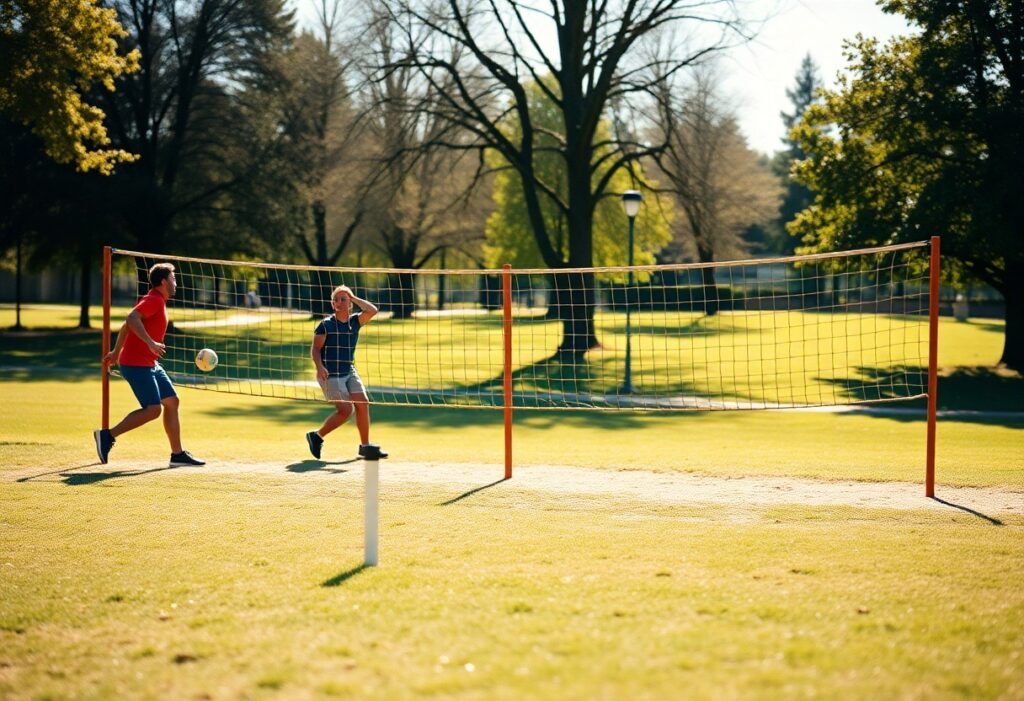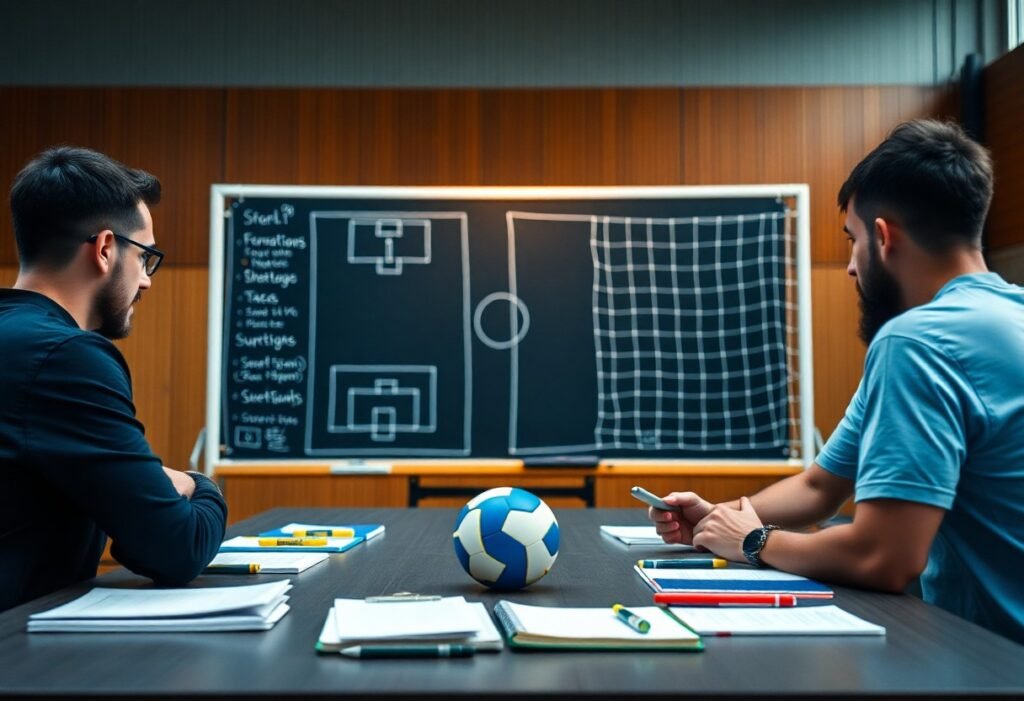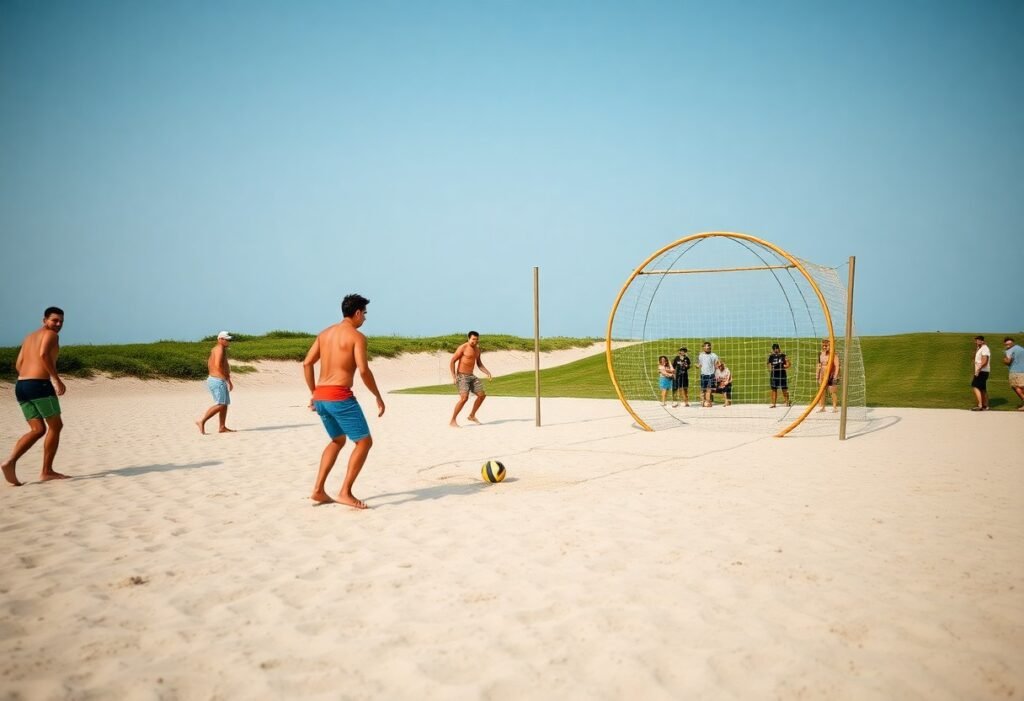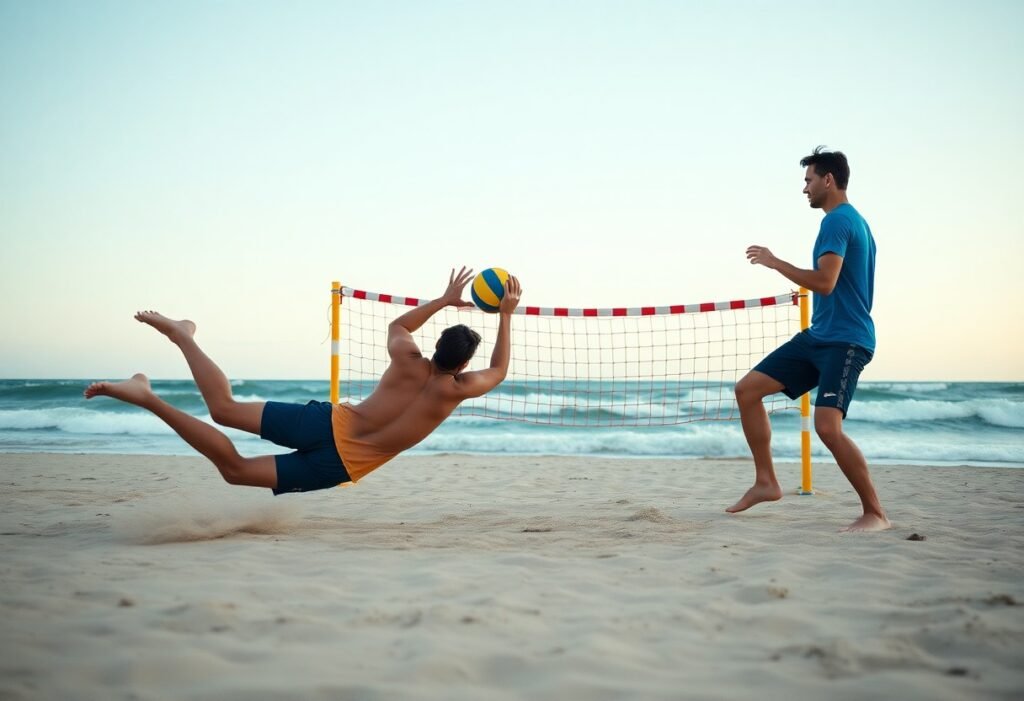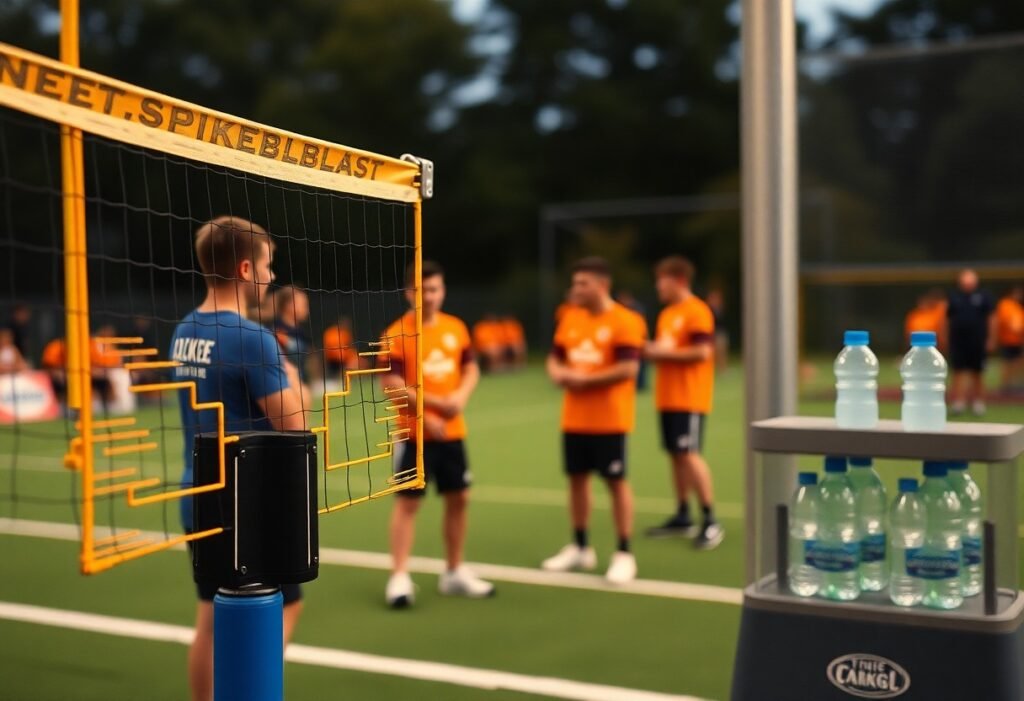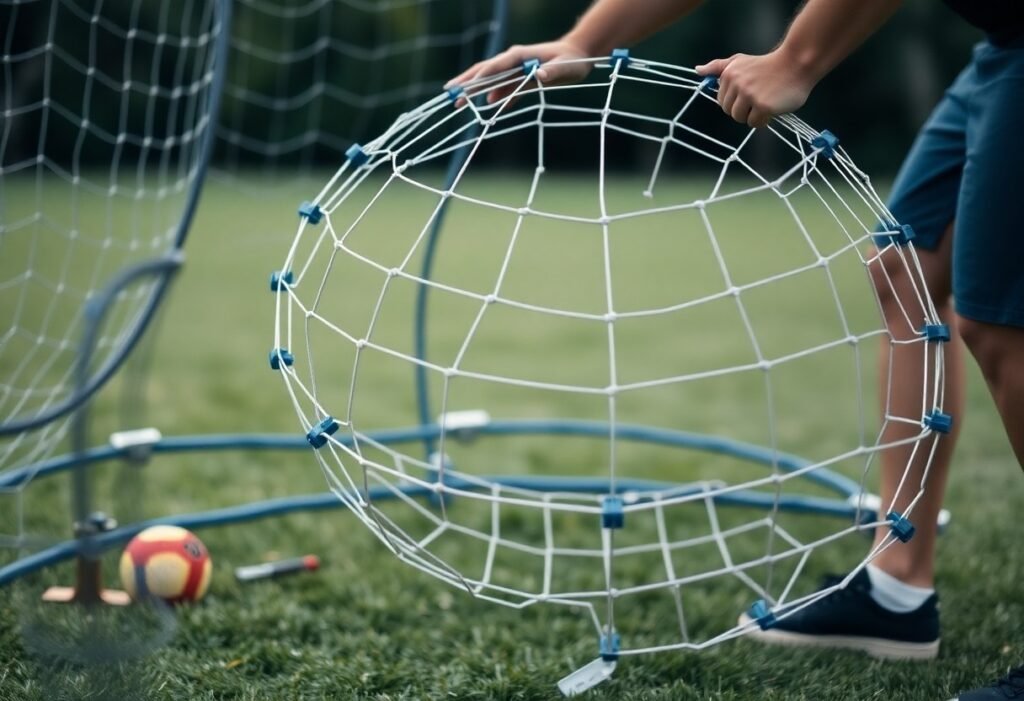Spikeball is an exciting sport that combines agility and teamwork, making it crucial for players like you to enhance your skills. Engaging in specific drills can significantly boost your reflexes and strengthen team collaboration. This blog post will introduce effective and practical drills tailored to elevate your game performance, ensuring you are both quick on your feet and in sync with your teammates. Ready to level up your Spikeball experience? Let’s investigate these transformative exercises.
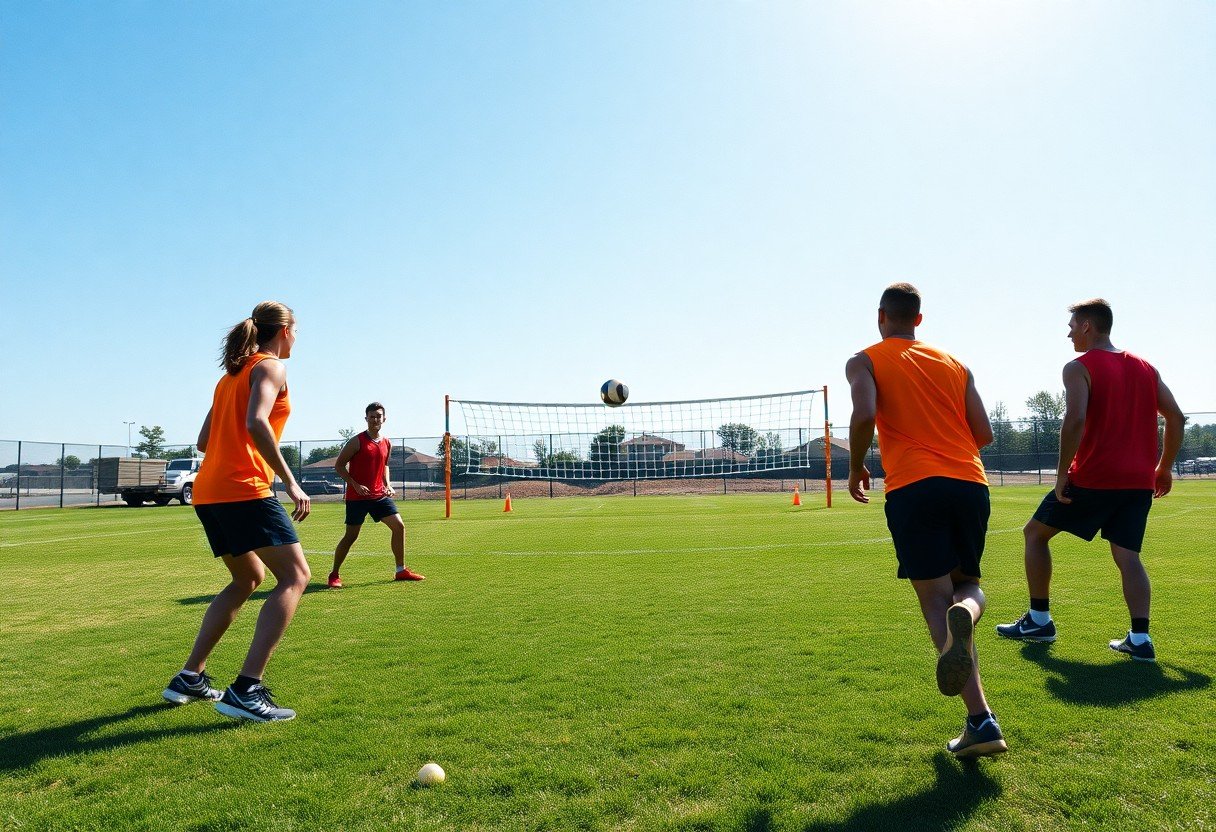
Key Takeaways:
- Drills that focus on quick hand-eye coordination enhance reflexes crucial for competitive play.
- Pair work and team drills promote communication and strategic movement among players.
- Incorporating varied scenarios improves adaptability and teamwork under pressure.
Understanding Spikeball
Overview of Spikeball
Spikeball is a dynamic team sport played with a round net placed at ankle height, where two teams of two players each take turns hitting a ball onto the net. The objective is to bounce the ball off the net in a way that makes it challenging for the opposing team to return it. This fast-paced game emphasizes agility, coordination, and sharp reflexes, contributing to its rising popularity among players of all ages.
Importance of Reflexes and Teamwork
In Spikeball, excellent reflexes and strong teamwork are fundamental for success. As the game unfolds quickly, players must be ready to respond instantly to their opponents’ actions, making quick decisions that can lead to points. Moreover, seamless communication and coordination between teammates ensure effective coverage of the court and successful plays.
Without sharp reflexes, you may find yourself struggling to keep up with the fast-paced nature of the game, often resulting in missed opportunities to score. As you anticipate your opponent’s moves, your ability to react swiftly can significantly impact the outcome of rallies. Teamwork amplifies this effect; successful Spikeball players exhibit synchronized movements and strategies, enabling them to cover ground, set up plays, and create openings. In fact, teams that excel at communicating effectively often have a competitive edge, underlining the importance of honing both individual skills and collaborative dynamics.
Basic Spikeball Drills
Solo Reflex Drills
To enhance your reflexes, try practicing solo with a spikeball. Stand about 6 feet from a wall and serve the ball against it. Focus on quickly repositioning yourself after each hit to react to the ball’s return. Increase the intensity by varying your serves or targeting specific areas of the wall. This drill not only sharpens your timing but also improves your overall hand-eye coordination.
Partner Passing Drills
Partner passing drills are key for developing teamwork and communication on the court. Pair up with a teammate and position yourselves a few feet apart. Take turns passing the spikeball back and forth, focusing on using accurate strikes to control the ball’s direction. Emphasize consistency and timing to ensure seamless exchanges.
Incorporate different types of passes—such as forehand, backhand, and overhead—to simulate game situations and enhance versatility. You might also introduce an element of challenge by increasing the distance between you or limiting the number of touches each player has before the ball must be returned. These variations will help in building not only individual skills but also in fostering a stronger connection between teammates, enhancing your overall game strategy.
Intermediate Spikeball Drills
Targeted Reflex Drills
For targeted reflex training, partner up and use a spikeball to focus on specific angles and responses. Have your partner serve the ball at varying heights and speeds while you remain alert and ready to react. This drill sharpens your reaction time and ability to handle unexpected plays, important for competitive scenarios. Ensure that you alternate roles, allowing both players to improve their reflexes.
Team Communication Exercises
Effective communication between teammates can significantly elevate your gameplay. Set up a drill where one player serves the ball to the opposite side while the other player communicates their expectations, such as where to position themselves on the court. This practice fosters a stronger connection, as you learn to anticipate each other’s moves, leading to sharper plays during actual matches.
Incorporating specific phrases during drills enhances clarity. For instance, when positioning for a spike, call out “I’m going up!” or “Cover!” to indicate your intentions. This approach helps solidify your roles in chaotic game situations, ensuring that both you and your partner are synchronized. By practicing these communication drills regularly, you create an unspoken understanding that benefits your team’s overall performance.
Advanced Spikeball Drills
- Reaction Time Training
- Movement Pattern Drills
- Situational Awareness Exercises
- Team Coordination Routines
- Pressure Play Drills
| Drill | Description |
|---|---|
| Reaction Time Training | Use a partner to spike the ball in unpredictable directions while you focus on quick responses. |
| Movement Pattern Drills | Set up markers and practice moving to different spots to anticipate game play. |
| Situational Awareness Exercises | Play games with blindfolds alternating with open eyes, enhancing awareness of surroundings. |
| Team Coordination Routines | Run through common plays with teammates, focusing on timing and communication. |
| Pressure Play Drills | Simulate tight game scenarios to practice maintaining composure under stress. |
Dynamic Movement Drills
Incorporating dynamic movement drills enhances your agility and speed during gameplay. Focus on lateral shuffles, forward sprints, and backward runs around the Spikeball court. Use cones for direction changes to mimic in-game scenarios. This not only prepares your body for varied movements but also sharpens your reflexes, helping you respond quickly to the ball’s position and your opponent’s actions.
Competitive Team Scenarios
Engaging in competitive team scenarios challenges you and your teammates to work cohesively under game-like conditions. Simulate match situations where specific plays are executed under a point limit. This encourages collaboration and highlights each player’s strengths, creating an environment to refine strategies continuously. The key is to maintain communication and trust within the team during high-pressure situations.
More elaborate competitive scenarios can involve creating drills with specific winning conditions, such as rallying a certain number of points without mistakes or achieving a designated score margin. Incorporate time limits and varying player roles to foster adaptability and tactical thinking. This ensures every practice mimics the intensity and unpredictability of actual matches, ultimately enhancing your performance when it counts.
Strategy Development for Team Play
Role Assignment within Teams
Assigning specific roles based on each player’s strengths can significantly enhance your team’s performance. For instance, one player might excel as a strong server, while another may be more effective in defensive positions. Establishing clear responsibilities ensures that each player understands their contribution to the team’s success, enabling smoother play and better coordination during matches.
Understanding Opponent Patterns
Observing and analyzing your opponents’ tendencies greatly boosts your strategic approach. By identifying their favorite plays or formation patterns, you can effectively anticipate their moves and adjust your tactics. This information allows you to position yourself more advantageously and disrupt their game plan.
For example, if you notice that your opponents consistently aim for the left side of the net after a serve, you can shift your positioning and prepare to defend that zone more effectively. Furthermore, utilizing video analysis to review opponent games can reveal their strengths and weaknesses, allowing you to devise counter-strategies. Engaging in this thorough understanding transforms your gameplay, making you not just reactive but proactively ready to take advantage of their predicted strategies.
Integrating Drills into Regular Practice
Creating a Practice Schedule
To effectively incorporate drills into your regular practice sessions, establish a structured schedule that balances skill development and gameplay. Aim for at least two practice sessions per week, dedicating specific time slots—such as 15-20 minutes per session—strictly for drills focused on reflex enhancement and teamwork. This ensures that players can see measurable progress, while also keeping sessions engaging and dynamic. Utilize resources such as Playing Spikeball in Physical Education – Gopher PE Blog for ideas on scheduling and content.
Encouraging Team Feedback
Facilitating a culture of open feedback among teammates can significantly improve collaborative skills and performance. Create specific times during or after practice for players to share their observations and suggestions on both individual and team play. This process cultivates a shared understanding, allowing teammates to adjust strategies that better showcase each player’s abilities.
Structuring feedback sessions can enhance communication and promote a growth mindset. Consider using a simple model where each team member highlights one strength and one area for improvement for each player. This creates a balanced approach, fostering trust and accountability while encouraging all players to contribute constructively to team dynamics.
Final Words
To wrap up, incorporating Spikeball drills into your training can significantly enhance both your reflexes and teamwork skills. By focusing on specific practices that encourage quick reactions and effective communication with your partner, you can elevate your game. Consistent training through these targeted drills not only improves your individual performance but also fosters a stronger connection and synergy with your teammates, leading to a more successful overall experience on the court.
FAQ
Q: What are some effective Spikeball drills for improving reflexes?
A: Drills such as “Spike & React” involve one player spiking the ball while the other practices quick reactions to return the ball. Additionally, “Quick Hands” can be useful where players stand close together and hit the ball back and forth rapidly, focusing on speed and accuracy.
Q: How can teamwork be enhanced through Spikeball drills?
A: Drills like “Communication Practice” help teams develop verbal cues and signals to coordinate movements. Another effective drill is “Positioning Drill,” where players practice specific roles and movements together to improve overall teamwork during matches.
Q: Are there any specific drills for beginners focused on reflex improvement?
A: Yes, beginners can try “Wall Drill,” where players hit the ball against a wall and react to its return. This can be done at various distances to gradually enhance reflexes. “Partner Pass” is also beneficial, where two players toss the ball back and forth while ensuring quick hand movements.
Q: What is a good way to track progress in Spikeball skills related to teamwork and reflexes?
A: Keeping a journal to note improvements in various drills, recording scores, and tracking response times can be effective. Additionally, setting specific goals for each practice session can help measure progress over time.
Q: How often should teams practice Spikeball drills to see improvement?
A: Practicing at least two to three times a week for 30 to 60 minutes can lead to noticeable improvements in both reflexes and teamwork. Consistency is key to developing skills over time.


